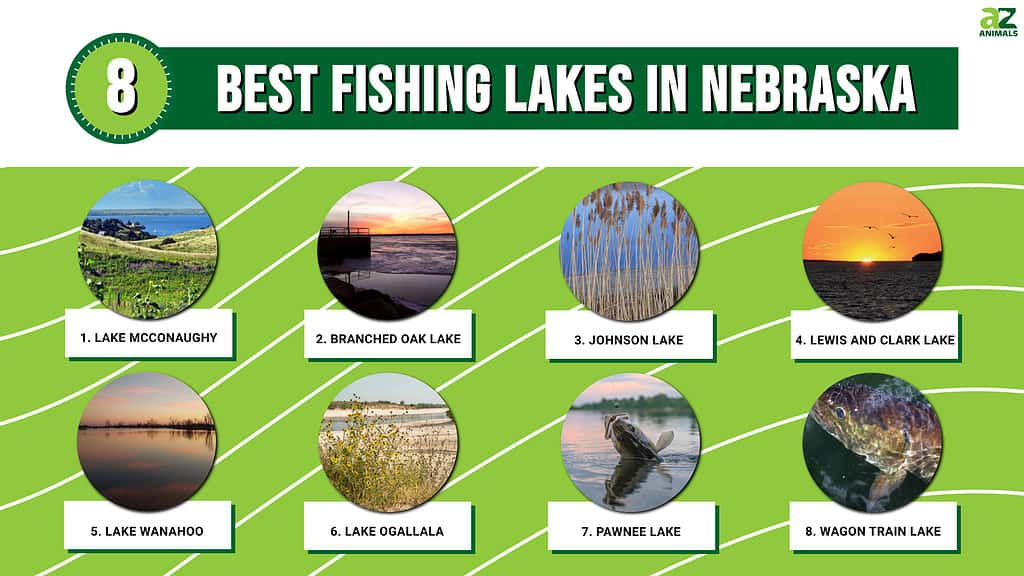
Branched Oak Lake is famous for its exceptional
crappie
and catfish fishing.
©
Welcome to the land of pristine waters and abundant fish! Nebraska, nestled in the heart of the Great Plains, boasts a treasure of fishing lakes that will surely delight angling enthusiasts. Whether you prefer serene, picturesque spots tucked away in breathtaking landscapes or vast bodies of water teeming with a wide variety of fish, Nebraska has it all. So, pack your gear, grab your favorite rod, and get ready to explore Nebraska’s best fishing lakes that are sure to leave you hooked!
1. Lake McConaughy
Situated less than ten miles northeast of the charming town of Ogallala, lies a true hidden gem that is beloved by residents of Nebraska. Lake McConaughy, the largest reservoir in the state, spans an impressive 35,700 acres. It offers a plethora of water sports activities. This retreat is a popular vacation destination for locals, conveniently located in the southwest region of Nebraska with easy access from I-80.
Visitors to Lake McConaughy can indulge in various boating experiences, whether it’s kayaking, canoeing, sailing, or water skiing. After a day of enjoying the water wonderland, there are numerous options available for accommodation. These include camping and RV parks, as well as traditional lodging choices.
The lake boasts an abundant variety of fish species, ensuring that anglers of all preferences will find something to entice them. Bass, walleye, trout, catfish, northern pike, and sunfish all call this lake their home, thriving on the plentiful food supply. In addition, the presence of rocky shorelines, docks, and ample brush provides ideal hiding spots for both fish and baitfish, making Lake McConaughy an excellent fishing location.
Interestingly, fishing, hunting, boating, and scuba diving draw over one million visitors annually to the Lake McConaughy State Recreation Area!
Despite its artificial origin, Lake McConaughy has evolved into a vital habitat for local wildlife, including threatened and endangered species. The lake’s crystal-clear, expansive waters reach an astonishing depth of 142 feet. This depth makes the lake a perfect environment for various large fish species to thrive.
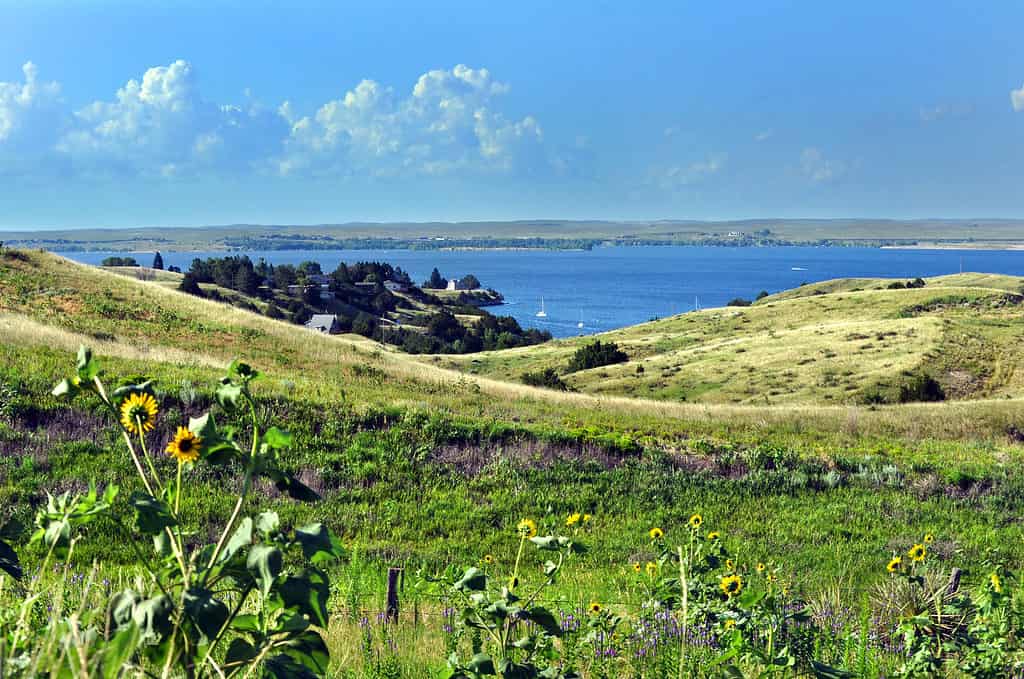
Lake McConaughy.
©Bonita R. Cheshier/Shutterstock.com
2. Branched Oak Lake
Branched Oak Lake, located in the southeastern part of the state, is the largest among the Salt Valley lakes. Encompassing approximately 1,800 acres, this expansive body of water offers abundant opportunities for shore fishing.
For those seeking a combination of leisurely exploration and angling, kayaks and canoes provide an ideal means to navigate the lake while enjoying a bit of exercise. Multiple boat ramps cater to both fishing and recreational boats. Visitors can conveniently access boat rentals, slips, boating gear, and fishing tackle at Branched Oak Marina. When hunger strikes, vacationers can visit The Boat House Bar & Grill.
Anglers flock to Branched Oak Lake for the chance to catch a variety of fish, making it an ideal option for those seeking a unique fishing experience. The lake is famous for its exceptional crappie and catfish fishing. However, it also offers ample opportunities to reel in walleye, wipers, largemouth bass, and bluegills. Three distinct types of catfish, namely flatheads, blue catfish, and channel catfish, call Branched Oak Lake home. Channel catfish typically range from 3 to 8 pounds, although there’s always the possibility of landing a hefty 15- to 20-pound specimen. As for flatheads, it’s not uncommon to hook one weighing over 40 pounds.
The walleye population in the lake is limited, presenting a challenge to anglers. However, successfully catching one can be highly rewarding, potentially yielding a trophy-sized fish.
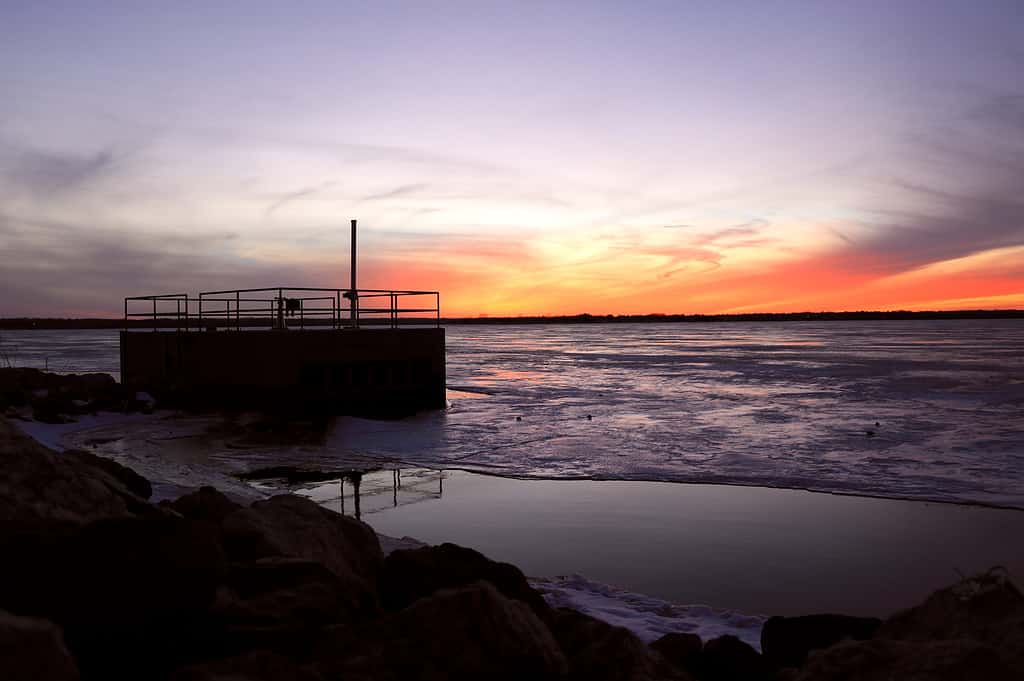
Sunset at Branched Oak Lake.
©Daniel Stephen Hakes/Shutterstock.com
3. Johnson Lake
Located approximately 12 miles southwest of Lexington, Johnson Lake provides a convenient retreat for fishing and boating lovers. This expansive lake spans 2,068 acres and boasts a diverse range of fish species.
Anglers without access to boats can take advantage of two fishing piers with handicap accessibility. Moreover, the abundant shoreline fishing opportunities make it an ideal spot for fishing enthusiasts. On the other hand, those equipped with fishing boats, kayaks, or canoes will find ample fishing waters surrounding the lake, catering to both shallow and deep schools of fish. Numerous docks and miles of rip rap offer plenty of targets for anglers to cast their lines toward their preferred fish species.
Among the notable species are walleye, white bass, crappie, channel catfish, wipers, flathead catfish, largemouth bass, striped bass, perch, and northern pike.
Johnson Lake is well-known, particularly for white bass and walleye. The best time to capture white bass is during their spawning period. This usually takes place from the end of April to the middle of May. After the spawning season concludes, you can spot white bass near the lake’s shoreline and around the outlet canal on the northeastern side. Between the middle of summer and late September, white bass migrates to deeper waters in search of shade and other small fish. During late May and June, walleye tend to frequent the flats and areas where the lake bottom gradually descends into greater depths.
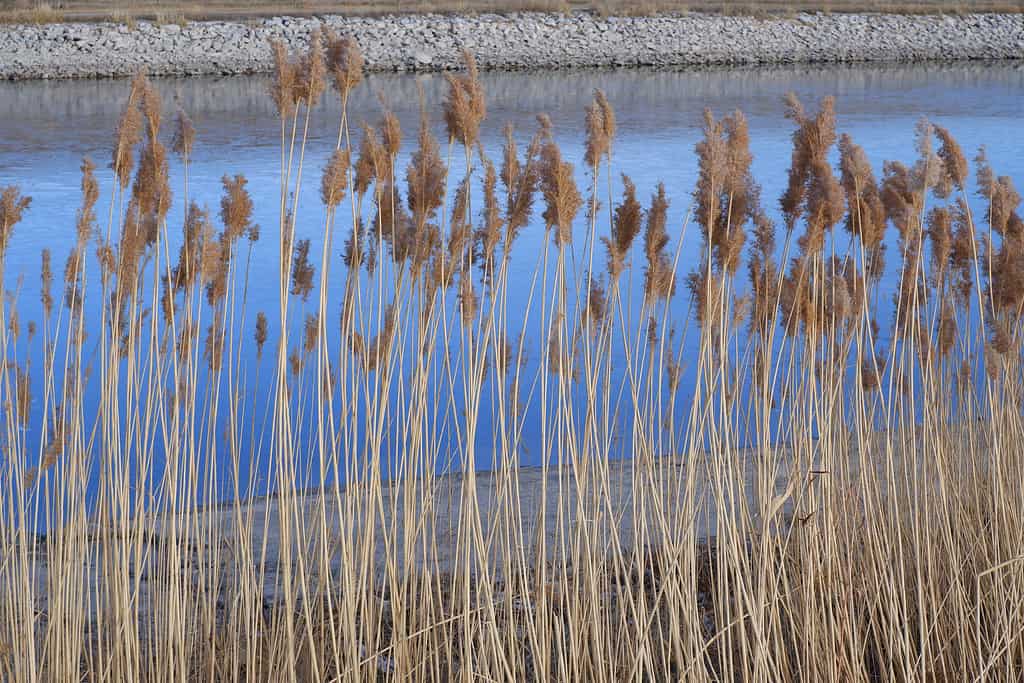
Johnson Lake.
©Mark Metzler Digital Art/Shutterstock.com
4. Lewis and Clark Lake
Lewis and Clark Lake, situated on the border of Nebraska and South Dakota, is a sprawling reservoir covering an impressive 31,000 acres along the Missouri River. This picturesque lake, stretching 25 miles in length, offers a haven for various water sports enthusiasts. Visitors can engage in a wide range of boating activities, whether they prefer sailing, pontoon boats, canoes, or kayaks.
The fishing opportunities at Lewis and Clark Lake are exceptional, attracting anglers of all skill levels. Popular catches include catfish, walleye, sauger, and saugeye. The delectable walleye can be found in deeper waters throughout the year, particularly around structures associated with the river channel. During the spring season, they migrate to shallower rocky areas. Catfish, on the other hand, tend to inhabit the river channel and often venture into shallow areas to feed. Additionally, the lake boasts a thriving population of bass, crappie, sunfish, and northern pike. Anglers can take advantage of the extensive shoreline, which provides ample opportunities for bank fishing.
For those who wish to explore the lake by boat, multiple boat launch sites are available. There are abundant camping and RV spots along the water’s edge. On the South Dakota side of the lake, a well-equipped marina offers boat rentals as well as supplies for boating, fishing, and camping. Visitors can also enjoy a satisfying dining experience at the marina’s complete restaurant.
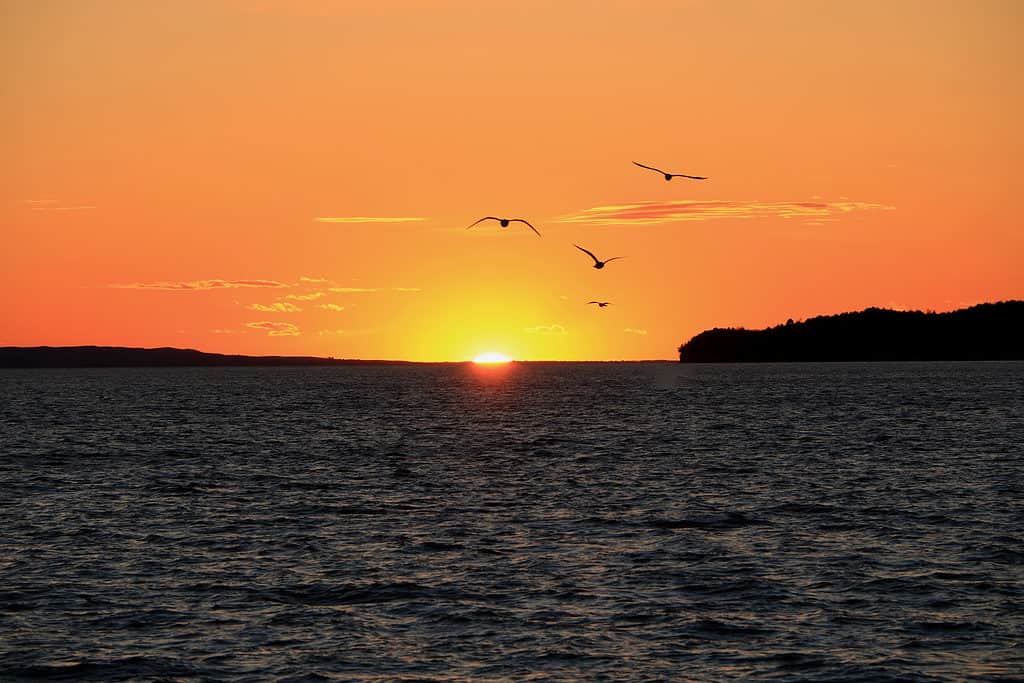
Lewis and Clark Lake.
©Daniel Stephen Hakes/Shutterstock.com
5. Lake Wanahoo
Lake Wanahoo, spanning 637 acres, is located one mile north of Wahoo, NE. It boasts a wide array of campsites covering over a hundred options, accommodating various preferences such as tent sites or RV spaces equipped with electrical hookups. Avid boaters will appreciate the excellent boat ramps available, catering to canoes, kayaks, fishing boats, and pontoon boats.
Fishermen, both seasoned and novice, can take advantage of numerous fishing jetties. Two of them are designed with accessibility in mind, offering an enhanced fishing experience from the shore. Furthermore, the lake’s shoreline is easily accessible via well-established roads and walkways.
Lake Wanahoo stands out as one of the most popular lakes in eastern Nebraska. The lake holds a wealth of bluegill and crappie, providing excellent fishing opportunities, along with abundant largemouth bass, walleye, and northern pike. Regardless of the season, Wanahoo remains a favored fishing spot, although ice fishing tends to attract the most visitors.
To optimize the fishing experience, various measures have been implemented to enhance both the habitat for fish and the angler’s chances of success. The creation of flooded timber, complete with accessible boat routes, offers ample cover for fish populations.
Multiple fishing jetties, equipped with fishing piers, are strategically positioned, including rocky points that further attract fish. Moreover, the presence of docks provides shade and encourages vegetation growth, contributing to a thriving ecosystem.
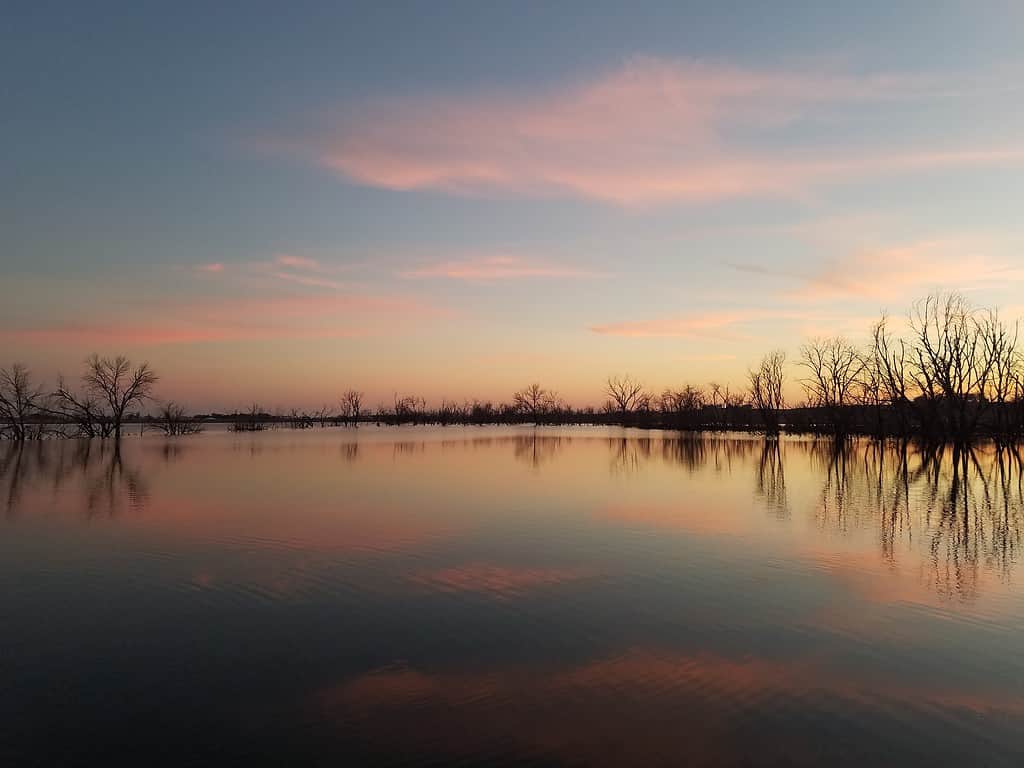
Lake Wanahoo.
©culturalrelic/Shutterstock.com
6. Lake Ogallala
Lake Ogallala is situated just downstream from the Lake McConaughy dam. This serene reservoir spans 650 acres in the southwestern region of Nebraska. It provides a tranquil setting for boating and fishing enthusiasts.
Lake Ogallala presents an ideal spot for anglers with smaller fishing boats, kayaks, and canoes, thanks to its “no wake” policy. Families are encouraged to visit this lake, as it is a perfect picnic spot. Numerous access points are available around the lake, ensuring ample opportunities for shoreline fishing.
Renowned for its exceptional trout fishing, Lake Ogallala stands out as a premier angling destination in the Great Plains area. The dam’s cold water and effective aeration create optimal conditions that attract trout, making it an angler’s paradise.
To enhance the fishing experience, authorities from the Game and Parks Department have introduced wipers, a hybrid fish resulting from a crossbreeding between white bass and striped bass. This addition has significantly enriched the fishing scene, providing anglers with thrilling and abundant catches.
Visitors might encounter yellow perch, channel catfish, and occasionally wipers during their fishing expeditions.
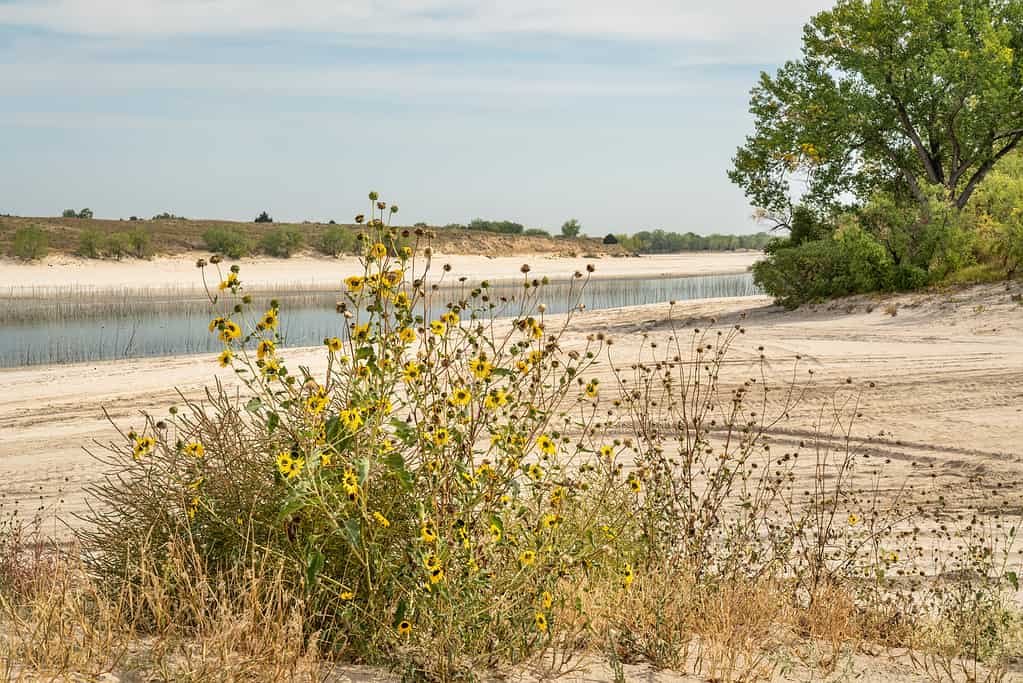
Lake Ogallala.
©marekuliasz/Shutterstock.com
7. Pawnee Lake
Located just a mile away from I-80, Pawnee Lake stretches across 740 acres in southeast Nebraska, attracting avid anglers from the Lincoln area.
This popular lake offers easy access for boating and fishing with its three boat ramps and two docks. Fishermen can take advantage of the rocky shoreline and aquatic vegetation that provide excellent cover for both baitfish and predator fish. Many visitors prefer fishing from the shoreline, as there are numerous accessible areas around the lake. All types of watercraft, including bass boats, fishing boats, canoes, and kayaks, are permitted on the lake.
Pawnee Lake not only provides exceptional fishing opportunities but also serves as a hub for various recreational activities. Visitors can indulge in swimming, picnicking, and wildlife watching while enjoying the scenic surroundings. The lake’s facilities include a marina, a gasoline station, and a convenience store, ensuring comfort for all visitors. It’s worth noting that a State Park Permit is necessary for entry to Pawnee Lake.
Pawnee Lake boasts a diverse range of fish species, including white bass, walleye, channel catfish, flathead catfish, black crappie, largemouth bass, and bluegill, among others. Anglers can take advantage of the lake’s fish cleaning station. This makes it easier to prepare their catch for consumption or storage.

Pawnee Lake boasts a diverse range of fish species, including walleye.
©iStock.com/FedBul
8. Wagon Train Lake
Located in the southeastern region of the state, Wagon Train Lake offers an idyllic setting for individuals who enjoy fishing in peaceful surroundings. Though all boat types are allowed on the lake, a speed limit of 5 miles per hour is rigorously enforced across the entire lake. Spanning 315 acres, this lake is particularly well-suited for those keen on kayaking, canoeing, and employing non-motorized watercraft.
A wide variety of fish species can be found at Wagon Train Lake, such as bluegill, channel catfish, largemouth bass, muskie, striped bass, and walleye. Furthermore, crappie and redear sunfish can also be found within the diverse fish populations that inhabit the lake.
To access the lake with ease, a well-kept boat ramp accompanied by a dock is positioned on the eastern side, right where Park Road meets the lake. Additionally, those wishing to camp in close proximity to the lake can take advantage of over one hundred campsites, with some offering hookups for recreational vehicles.
Day visitors can enjoy a generous number of picnic tables and grills to enhance their outdoor dining experience.
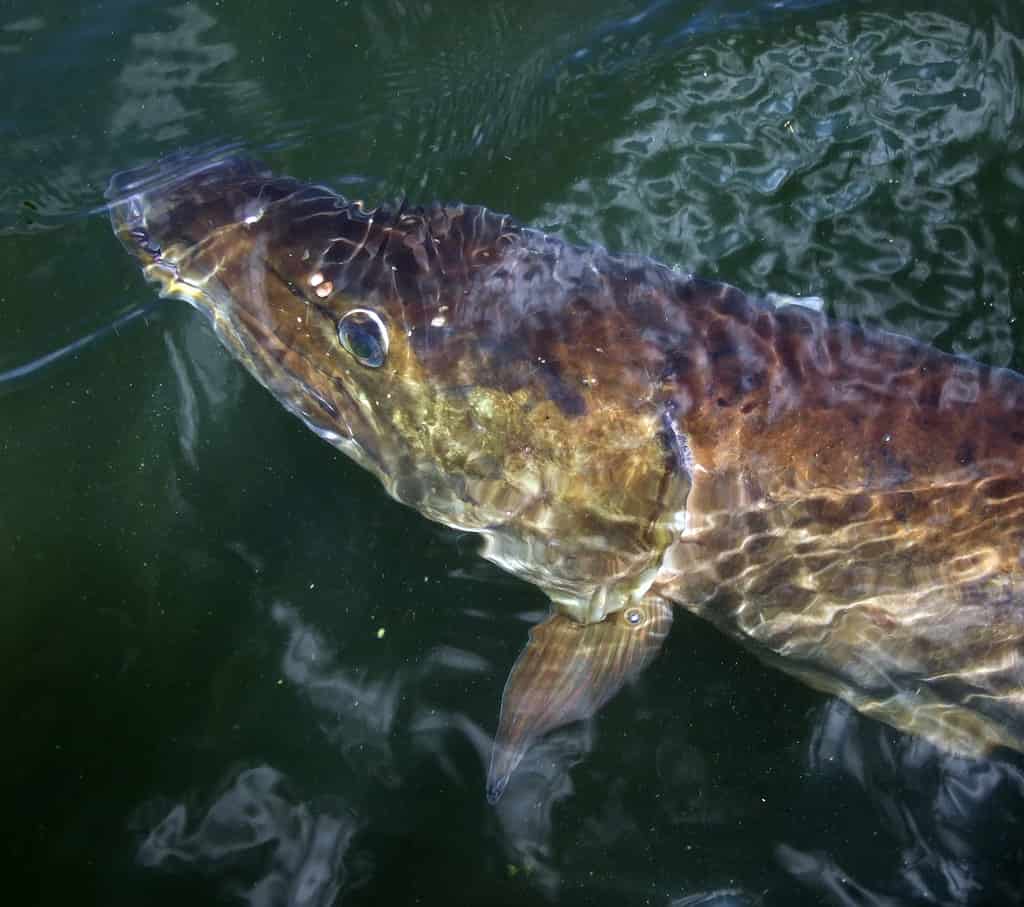
Wagon Train Lake hosts many fish species, including muskies.
©M Huston/Shutterstock.com
The photo featured at the top of this post is © azarinelli/Shutterstock.com
Thank you for reading! Have some feedback for us? Contact the AZ Animals editorial team.






